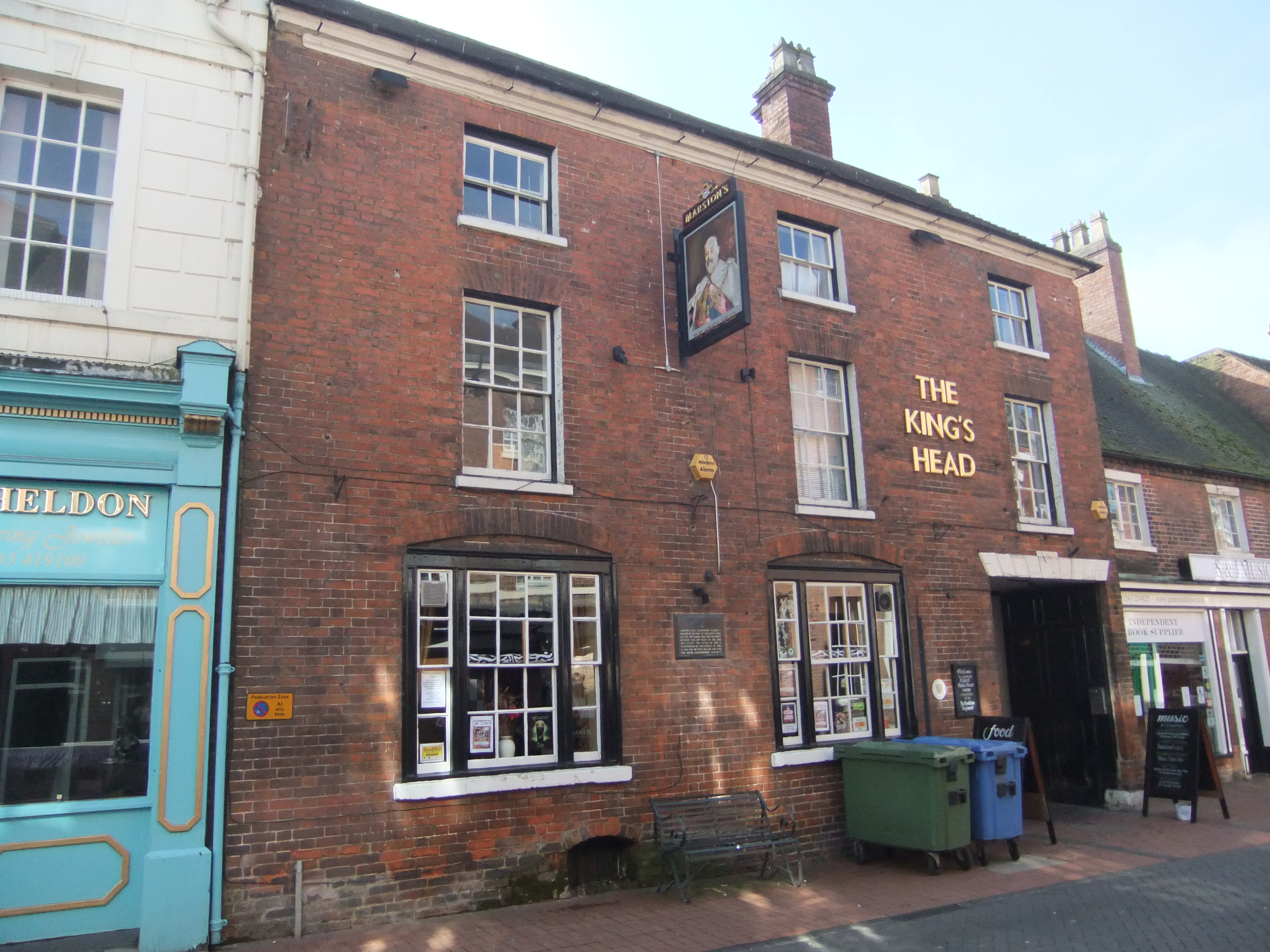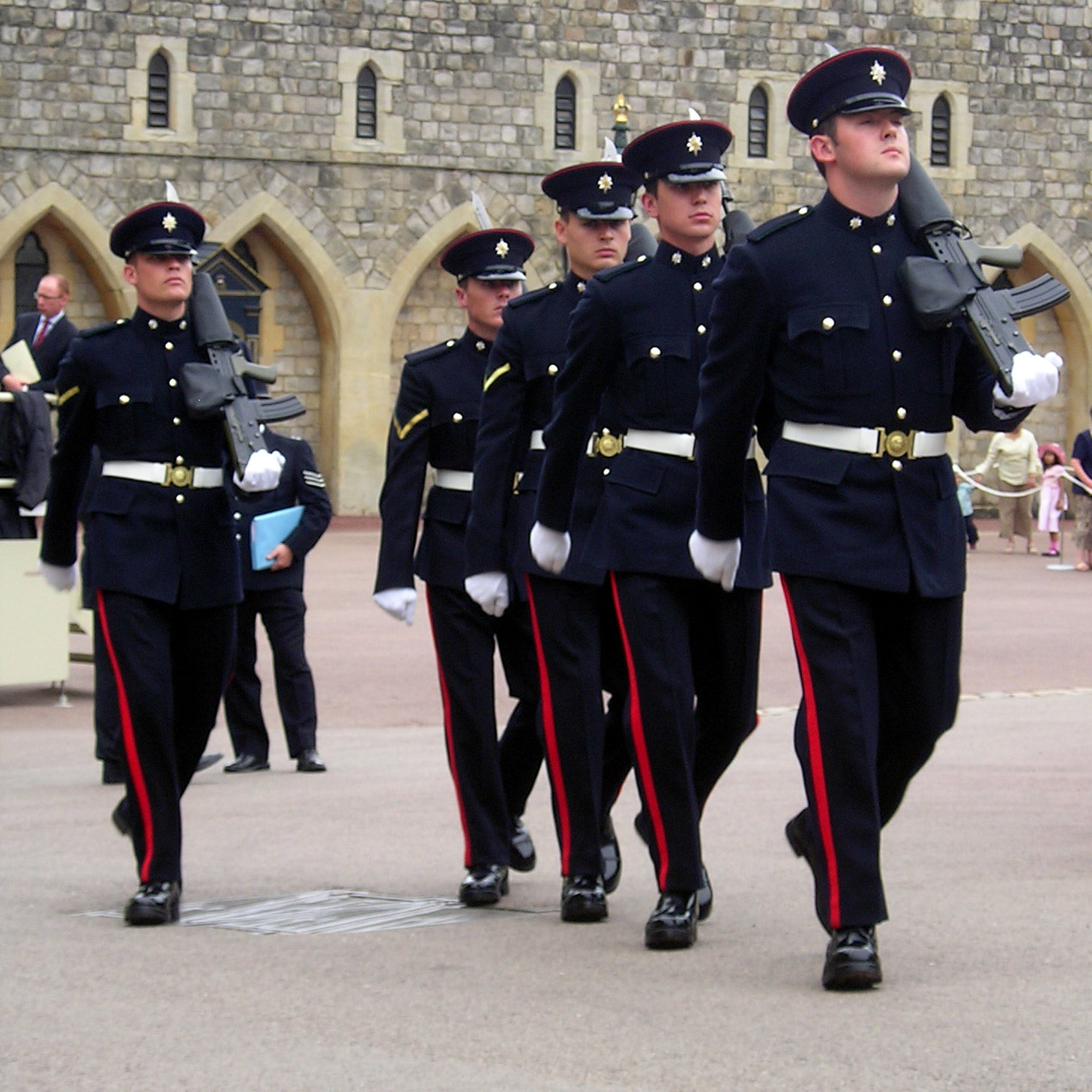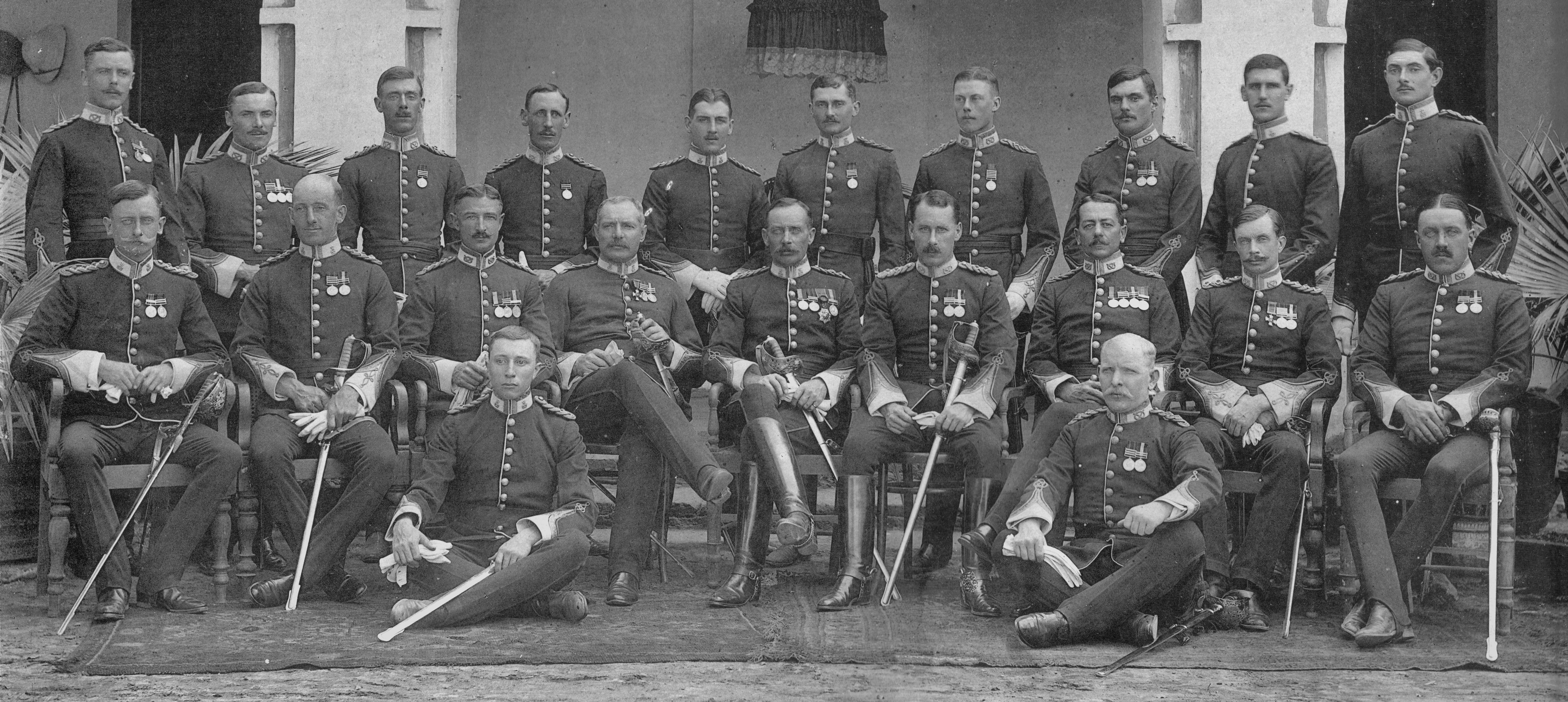|
The South Staffordshire Regiment
The South Staffordshire Regiment was a line infantry regiment of the British Army in existence for only 68 years. The regiment was created in 1881 under the Childers Reforms by the amalgamation of the 38th (1st Staffordshire) Regiment of Foot and the 80th (Staffordshire Volunteers) Regiment of Foot. The regiment saw service in the Second Boer War, World War I and World War II. Reduced to a single Regular Army battalion after the Second World War, the regiment was amalgamated, in 1959, with the North Staffordshire Regiment (Prince of Wales's) to form the Staffordshire Regiment (Prince of Wales's) which was later, in 2007, amalgamated with the Cheshire Regiment and the Worcestershire and Sherwood Foresters Regiment to form the Mercian Regiment. History Formation and antecedents The regiment was formed as part of the Childers Reforms on 1 July 1881 by the amalgamation of the 38th and 80th regiments of foot, which became the regular 1st and 2nd battalions of the South Staffordshi ... [...More Info...] [...Related Items...] OR: [Wikipedia] [Google] [Baidu] |
Cap Badge
A cap badge, also known as head badge or hat badge, is a badge worn on uniform headgear and distinguishes the wearer's nationality and/or organisation. The wearing of cap badges is a convention commonly found among military and police forces, as well as uniformed civilian groups such as the Boy Scouts, civil defence organisations, ambulance services (e.g. the St. John Ambulance Brigade), customs services, fire services etc. Cap badges are a modern form of heraldry and their design generally incorporates highly symbolic devices. Some badges that contain images of Lions or other cats are sometimes informally referred to as Cat Badges. Instances in military forces British armed forces The British Armed Forces utilise a variety of metal and cloth cap badges on their headdress, generally on caps and berets. They are also worn on Sikh turbans. British Army In the British Army (as well as other Commonwealth armies) each regiment and corps has its own cap badge. The cap badge o ... [...More Info...] [...Related Items...] OR: [Wikipedia] [Google] [Baidu] |
38th (1st Staffordshire) Regiment Of Foot
The 38th (1st Staffordshire) Regiment of Foot was an infantry regiment of the British Army, raised in 1705. Under the Childers Reforms it amalgamated with the 80th Regiment of Foot (Staffordshire Volunteers) to form the South Staffordshire Regiment in 1881. History Early years The regiment was first raised by Colonel Sir John Guise as Sir John Guise's Regiment of Foot in 1688 and then disbanded in England in 1694. It was raised a second time by General Luke Lillingston as Luke Lillingstone's Regiment of Foot with personnel from the previous regiment in 1694 and then disbanded in the West Indies in 1696. The regiment was raised a third time at Lichfield by General Luke Lillingston as Luke Lillingstone's Regiment of Foot in March 1705. It was ranked as the 38th regiment in 1747. It was posted to Ireland later in the year and then sent to the West Indies in 1707. On 1 July 1751 a royal warrant was issued which provided that in future regiments would no longer be known by thei ... [...More Info...] [...Related Items...] OR: [Wikipedia] [Google] [Baidu] |
King's Own (1st Staffordshire) Militia
The King's Own (1st Staffordshire) Militia, later the 3rd and 4th Battalions, South Staffordshire Regiment was an auxiliary regiment in Staffordshire in the West Midlands of England. From 1662, and again after 1777, the regiment's primary role was in home defence and internal security. It was a favourite regiment of King George III, and spent much of the French Revolutionary and Napoleonic Wars protecting the king's residences, being rewarded with the title 'King's Own' in 1805. It served in the Mediterranean garrisons during the Crimean War. Under the Cardwell and Childers Reforms it became part of the South Staffordshire Regiment and raised a second battalion. Both battalions saw active service during the Second Boer War, and trained thousands of reinforcements during World War I. Later, one of the battalions served in combat on the Western Front, being virtually destroyed during the German Spring Offensive. After a shadowy postwar existence the battalions were formally disba ... [...More Info...] [...Related Items...] OR: [Wikipedia] [Google] [Baidu] |
Henry Paget, 1st Marquess Of Anglesey
Henry William Paget, 1st Marquess of Anglesey (17 May 1768 – 29 April 1854), styled Lord Paget between 1784 and 1812 and known as the Earl of Uxbridge between 1812 and 1815, was a British Army officer and politician. After serving as a member of parliament for Carnarvon and then for Milborne Port, he took part in the Flanders Campaign and then commanded the cavalry for Sir John Moore's army in Spain during the Peninsular War; his cavalry showed distinct superiority over their French counterparts at the Battle of Sahagún and at the Battle of Benavente, where he defeated the elite chasseurs of the French Imperial Guard. During the Hundred Days he led the charge of the heavy cavalry against Comte d'Erlon's column at the Battle of Waterloo. At the end of the battle, he lost part of one leg to a cannonball. In later life he served twice as Master-General of the Ordnance and twice as Lord Lieutenant of Ireland. Background, education and politics He was born Henry Bayley, the ... [...More Info...] [...Related Items...] OR: [Wikipedia] [Google] [Baidu] |
Luke Lillingstone
Luke Lillingstone or Lillingston (1653–1713) was a British Army general who accompanied William of Orange to England in 1688. Early life Lillingstone's surname is variably spelled Lillingstone, Lillingston and Lillingstein. He was born to Colonel Henry Lillingstone, of German extraction from Lilienstein. His maternal uncle, Colonel Thomas Dolman, served with his father in the Anglo-Dutch Brigade. Lillingstone himself was commissioned as an officer in the Brigade in 1673 and in 1688 he accompanied William of Orange to England. Command After fighting against Jacobite forces in Ireland, Lillingstone received his first command in 1692, when he took over the colonelcy of Jonathan Foulkes's Regiment on the latter's death. On assuming command the regiment became Luke Lillingstone's Regiment of Foot, and was to be the first of three regiments to bear this title. Lillingstone's regiment was disbanded in 1694, but was reraised the same year for service in the West Indies. This se ... [...More Info...] [...Related Items...] OR: [Wikipedia] [Google] [Baidu] |
Battalion
A battalion is a military unit, typically consisting of 300 to 1,200 soldiers commanded by a lieutenant colonel, and subdivided into a number of companies (usually each commanded by a major or a captain). In some countries, battalions are exclusively infantry, while in others battalions are unit-level organizations. The word battalion came into the English language in the 16th century from the French language ( French: ''bataillon'' meaning "battle squadron"; Italian: ''battaglione'' meaning the same thing; derived from the Vulgar Latin word ''battalia'' meaning "battle" and from the Latin word ''bauttere'' meaning "to beat" or "to strike"). The first use of the word in English was in the 1580s. Description A battalion comprises two or more primary mission companies which are often of a common type (e.g., infantry, tank, or maintenance), although there are exceptions such as combined arms battalions in the U.S. Army. In addition to the primary mission companies, a batt ... [...More Info...] [...Related Items...] OR: [Wikipedia] [Google] [Baidu] |
Mercian Regiment
The Mercian Regiment (Cheshire, Worcesters and Foresters, and Staffords) is an infantry regiment of the British Army, which is recruited from five of the counties that formed the ancient kingdom of Mercia. Known as 'The Heart of England's Infantry', it was formed on 1 September 2007 by the amalgamation of three existing regiments. The Regiment has had fifteen operational deployments since its formation. History The regiment's formation was announced on 16 December 2004 by the then Secretary of Defence Geoff Hoon and General Sir Mike Jackson as part of the restructuring of the British Army Infantry - it consisted of three regular battalions, plus a territorial battalion, and was created through the merger of three single battalion regiments. The antecedent regiments were, The 1st Battalion, Cheshire Regiment, The 1st Battalion, Worcestershire and Sherwood Foresters Regiment and the 1st Battalion, Staffordshire Regiment. The reserve West Midlands Regiment, with elements of the K ... [...More Info...] [...Related Items...] OR: [Wikipedia] [Google] [Baidu] |
Worcestershire And Sherwood Foresters Regiment
The Worcestershire and Sherwood Foresters Regiment (29th/45th Foot) (abbreviated as ''WFR'') was an infantry regiment of the British Army, part of the Prince of Wales' Division. The regiment served as the county regiment for Derbyshire, Nottinghamshire and Worcestershire.Mercian Regimental Handbook. History The regiment was formed in 1970 through the amalgamation of the Worcestershire Regiment and the Sherwood Foresters. The regiment was based at Battlesbury Barracks in Warminster and undertook a tour in Northern Ireland in 1972 during the Troubles. It moved to Berlin later that year and to Shackleton Barracks at Ballykelly in 1974 before returning to Meanee Barracks in Colchester in 1976. After a further tour in Northern Ireland in 1977 the regiment moved to Peninsula Barracks at Hemer in 1979. The regiment undertook another tour in Northern Ireland in 1982 before moving back to Battlesbury Barracks in Warminster in 1984 and relocating to Oakington Barracks in Cambridge in 19 ... [...More Info...] [...Related Items...] OR: [Wikipedia] [Google] [Baidu] |
Cheshire Regiment
The Cheshire Regiment was a line infantry regiment of the British Army, part of the Prince of Wales' Division. The 22nd Regiment of Foot was raised by the Duke of Norfolk in 1689 and was able to boast an independent existence of over 300 years. The regiment was expanded in 1881 as part of the Childers Reforms by the linking of the 22nd (Cheshire) Regiment of Foot and the militia and rifle volunteers of Cheshire. The title 22nd (Cheshire) Regiment continued to be used within the regiment. On 1 September 2007, the Cheshire Regiment was merged with the Worcestershire and Sherwood Foresters Regiment (29th/45th Foot) and the Staffordshire Regiment (Prince of Wales's) to form a new large regiment, the Mercian Regiment, becoming the 1st Battalion, Mercian Regiment. History Early wars Following the 1688 Glorious Revolution and the exile of James II, Henry Howard, Duke of Norfolk, raised a regiment at Chester on behalf of the new regime. The experience of the 1638-1652 Wars of t ... [...More Info...] [...Related Items...] OR: [Wikipedia] [Google] [Baidu] |
Staffordshire Regiment
The Staffordshire Regiment (Prince of Wales') (or simply "Staffords" for short) was an infantry regiment of the British Army, part of the Prince of Wales' Division. The regiment was formed in 1959 by the amalgamation of the South Staffordshire Regiment and the North Staffordshire Regiment (Prince of Wales'), and in 2007 was amalgamated with the Cheshire Regiment and the Worcestershire and Sherwood Foresters Regiment to become the 3rd Battalion, Mercian Regiment. In 2014, the 3rd Battalion, Mercian Regiment was merged with the 1st and 2nd battalions, to create the 1st and 2nd battalions, Mercian Regiment (Cheshires, Worcesters and Sherwood Foresters, and Staffords). The mascot of the Staffordshire Regiment was a Staffordshire Bull Terrier; each successive mascot took the name Watchman. The current serving mascot is known as Private Watchman VI and he carries out his duties as part of the Staffordshire Regimental Association. History Formation The regiment was formed on 31 Janu ... [...More Info...] [...Related Items...] OR: [Wikipedia] [Google] [Baidu] |
North Staffordshire Regiment
The North Staffordshire Regiment (Prince of Wales's) was a line infantry regiment of the British Army, which was in existence between 1881 and 1959. The 64th (2nd Staffordshire) Regiment of Foot was created on 21 April 1758 from the 2nd Battalion of the 11th Regiment of Foot. In 1881, under the Childers Reforms, the 64th Regiment of Foot was merged with the 98th (Prince of Wales's) Regiment of Foot (originally raised in 1824) to form the Prince of Wales's (North Staffordshire Regiment). In 1921 the regimental title was altered to the North Staffordshire Regiment (Prince of Wales's). Formed at a time when the British Empire was reaching its peak, the regiment served all over the Empire, in times of both peace and war, and in many theatres of war outside the Empire. It fought with distinction in World War I and World War II, as well as in other smaller conflicts around the world. These other wars included the Second Sudanese War, the Second Boer War, the Anglo-Irish War and the ... [...More Info...] [...Related Items...] OR: [Wikipedia] [Google] [Baidu] |
World War II
World War II or the Second World War, often abbreviated as WWII or WW2, was a world war that lasted from 1939 to 1945. It involved the vast majority of the world's countries—including all of the great powers—forming two opposing military alliances: the Allies and the Axis powers. World War II was a total war that directly involved more than 100 million personnel from more than 30 countries. The major participants in the war threw their entire economic, industrial, and scientific capabilities behind the war effort, blurring the distinction between civilian and military resources. Aircraft played a major role in the conflict, enabling the strategic bombing of population centres and deploying the only two nuclear weapons ever used in war. World War II was by far the deadliest conflict in human history; it resulted in 70 to 85 million fatalities, mostly among civilians. Tens of millions died due to genocides (including the Holocaust), starvation, massa ... [...More Info...] [...Related Items...] OR: [Wikipedia] [Google] [Baidu] |

.jpg)







